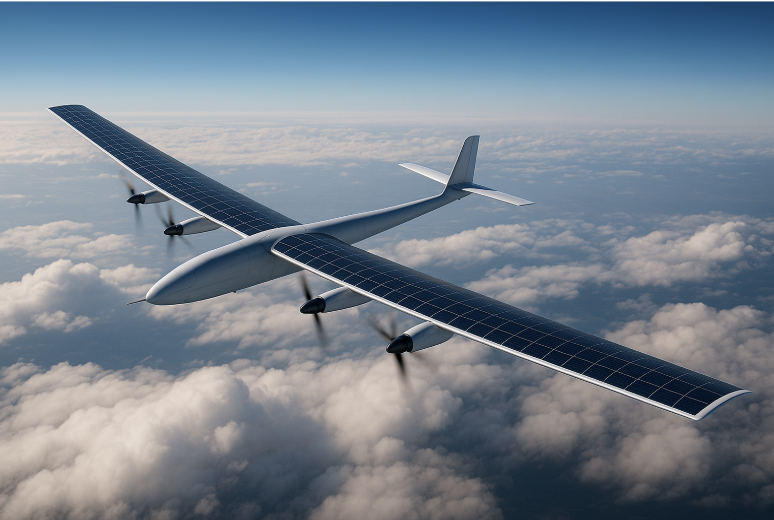What is it?
High-Altitude Platform Stations (HAPS) are long-endurance, solar- or hydrogen-powered aerial systems that operate in the stratosphere—typically at altitudes of 18 to 25 kilometers (above weather and commercial air traffic). They serve as quasi-satellites, offering telecom relay, surveillance, and remote sensing functions over broad areas.
How does it work?
HAPS platforms can be either fixed-wing UAVs, airships, or balloon-based systems, equipped with communication, imaging, or sensing payloads. These platforms:
- Harness solar energy via onboard photovoltaic cells and battery storage
- Maintain stationary positions or patrol predefined zones for days to months
- Relay signals between ground stations and devices, or gather data from the Earth’s surface
- Operate autonomously, with ground-based control for routing, mission planning, and data offload
Their altitude enables line-of-sight coverage over a radius of 100–200 km per unit—ideal for connecting remote areas or monitoring large regions.
Why is this important?
HAPS offers a unique value proposition as a third layer of infrastructure, complementing satellites and terrestrial networks:
- Bridges the digital divide in rural and hard-to-reach areas
- Provides disaster-resilient communications when ground infrastructure is damaged
- Enables persistent monitoring for climate, agriculture, and security
- Supports green energy goals through solar-powered, zero-emissions operation
- Delivers lower latency than satellites with far greater coverage than ground towers
In developing regions, archipelagic nations, and mountainous terrain, HAPS presents a cost-effective and flexible solution for digital connectivity and infrastructure modernization.
What can we expect in 5–10 years?
- Commercial deployments of HAPS fleets across Asia, Africa, and remote parts of Latin America
- Integration with 5G and 6G ecosystems, acting as aerial base stations or backhaul relays
- Expansion into non-telecom use cases such as wildfire detection, maritime surveillance, and carbon monitoring
- More nations including HAPS in digital infrastructure and national security strategies
- Emergence of hybrid networks combining HAPS, LEO satellites, and terrestrial assets for seamless global coverage
As costs decline and policy frameworks mature, HAPS is likely to play a mainstream role in smart infrastructure and resilient connectivity worldwide.
What else should I know about this?
- Regulatory frameworks are still evolving: Stratospheric operations require close coordination with civil aviation authorities and spectrum regulators.
- No global player has yet achieved full commercial scale, but rapid innovation and state-led initiatives are accelerating progress.
- Environmental advantages: With no emissions and minimal land use, HAPS aligns well with green infrastructure goals.
- Strategic leverage: Countries investing early in HAPS can gain a first-mover advantage in communications sovereignty and regional data resilience.
HAPS is more than a flying platform—it’s a new frontier in infrastructure, designed for the stratosphere but built for Earth’s most pressing needs. Speak to the NexAvian team today to find out more how you can select the right HAPS partner to deploy seamless connectivity solutions.





